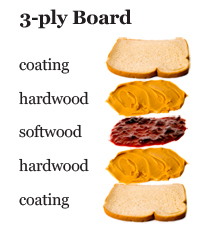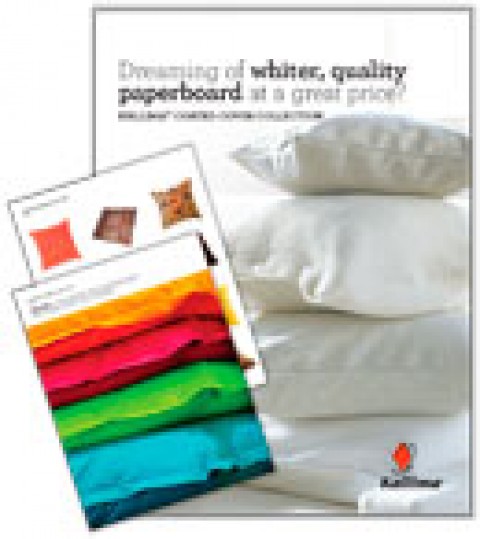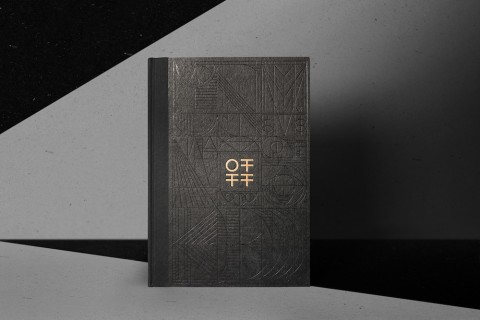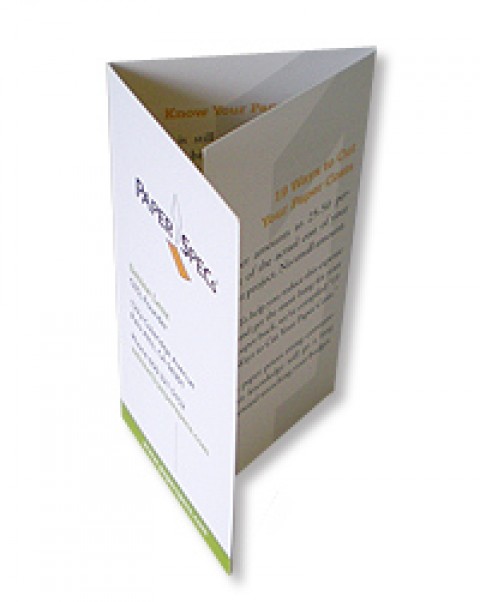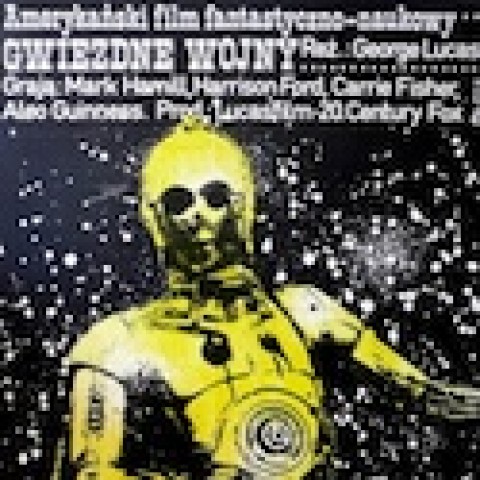By Sabine Lenz
You’re holding it in your hand every day. Many times – make that most of the time – you just take it for granted.
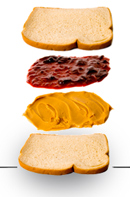
And why should you care anyway?
In many projects, your choice of substrate is an easy one. If you are talking about a classy wedding invitation, a nicely textured uncoated cover sheet will win any day.
But when it comes to magazine covers, postcards, presentation folders, your everyday workhorses, the requirements and your coated choices differ greatly.
The Secret of the PB and J Sandwich
Peanut butter or jelly? Sometimes choices are hard to make; but at some point in time, a great foodie-mind had the idea to combine both, making your choice an easy and obvious one.
Nope, not so easy when it comes to coated papers ;-( But, let’s stick with our analogy for a minute.
Coated paper and paperboard are made like a PB and J sandwich. Hear me out. The peanut butter and jelly symbolize the different fibers that go into the making of a base sheet of paper that is essential for either one of the two paper choices.
Then, you add two slices of a nice sandwich bread and voila. Sounds too simple? Trust me. In a sense, it is that simple. Let’s deconstruct our sandwich and take a closer look shall we!
Peanut Butter and Jelly
Every paper is made from a mixture of softwood and hardwood (peanut butter and jelly for you).
The softwood has longer, rougher fibers and is essential to give the paper its strength and substance – we’ll call this the jelly. (BTW, softwood comes from spruce, pine and larch.)
The hardwood fibers (coming from eucalyptus, aspen and birch) have weaker and shorter fibers, which are important for the smooth surface of a sheet – think of this as the peanut butter.
Every wood-based paper is made of a mixture of softwood and hardwood. The mixture, like any good recipe, varies depending on the paper that is made.
Coated Cover
Coated cover sheets start out as a regular uncoated sheet, to which the mill adds smooth, white layers of clay coating on each side of the sheet – not unlike our sandwich bread.
In coated sheets, the PB and J mixture is around 75 percent hardwood and 25 percent softwood.
Paperboard
Made in a similar fashion, a paperboard’s base sheet contains a much higher percentage of softwood and a smaller one of hardwood. This is what gives it more strength and sturdiness than a coated cover sheet.
To stay with our peanut butter sandwich analogy, the PB and J mixture in the middle of the paper now contains more jelly (softwood) making the paper harder and sturdier – perfect for use in postcards and many packaging applications.
The actual base sheet can now be coated on one side only (C1S) or on both sides (C2S) – one slice of bread or two.
The Highlights
Coated Sheets
– base sheet made with more hardwood
– both sides of the sheet are coated
– sheet is made to weight and has a fluctuating caliper
– weight ranges from 55 lb. to 140 lb. Cover (16 pt.)
Paperboard
– base sheet is made from softwood and a lower percentage of hardwood
– paperboard can be coated on one side (C1S) or coated on both sides (C2S)
– sheets are usually made to caliper (thickness), the weight can fluctuate slightly (important when dealing with USPS requirements)
– calipers range from 4 pt. to 26 pt.
But wait!
3-ply Paperboard
We live in amazing times, and we have access to paperboard well beyond the ones manufactured on our North American shores.
Much like the metric system and the fact that no one in Europe has ever heard of a PB and J sandwich, the paperboard that is made there is manufactured with a slight twist.
Instead of having one layer of a softwood/hardwood mixture as a base sheet, these papers usually have three layers before a coating is applied.
All nice and dandy, I hear you say, but why? And why should you care?
Well, the middle layer is the hardest one, mostly jelly, and gives the paper its sturdiness. Then there is a layer with mainly peanut butter (hardwood fiber) on each side. Remember, hardwood is responsible for making the paper smooth and easy to print on. And now … the bread slices are added.
The benefits? The paper manufactured in this way has a greater flexibility and scoreability – important when it comes to high-end packaging.
The Pros and Cons
Life is never black and white, so there are a number of areas where your choice between paperboard and a coated sheet is not a straightforward one.
Besides the tactile feel and overall look of the sheet, another very important aspect is the small factor called “budget.”
Leaving the premium coated sheets on a pedestal by themselves, in many cases, moving to a C1S or C2S sheet can save you 10 to 20 percent in the paper cost of your project.
All things being equal, the deciding factor between Coated Cover, C1S and C2S should always be the end use and desired longevity of the piece.
Now all that food talk has made me hungry. PB and J sandwich anyone?
If you missed our recent webinar, “The Secret Life of Paperboard” with guest speaker Stuart Slate, please click here! Along with samples of paperboard success stories, Slater answered some of the most frequently asked questions such as:
- When does paperboard’s lightweight construction save money?
- What’s the difference between caliper and weight?
- Will the press be able to run paperboard with quality results?
- Can paperboard be foil stamped, embossed and coated?
- Are there environmentally sustainable paperboard options?
- Why should you care about paperboard?
——-
Seeing designers worldwide struggle to stay current with new papers and paper trends inspired Sabine Lenz to create PaperSpecs, an independent and comprehensive Web-based paper selection tool and weekly e-newsletter. Growing up in Germany, she started her design career in Frankfurt, before moving on to Australia and the United States. Lenz worked on design projects ranging from corporate identities to major road shows and product launches. From start-ups to Fortune 500 companies, her list of clients included Oracle, Sun Microsystems, Deutsche Bank, IBM and KPMG. Lenz is a noted speaker and author on paper issues and educational topics related to the paper industry.
Copyright 2011 PaperSpecs.com.

